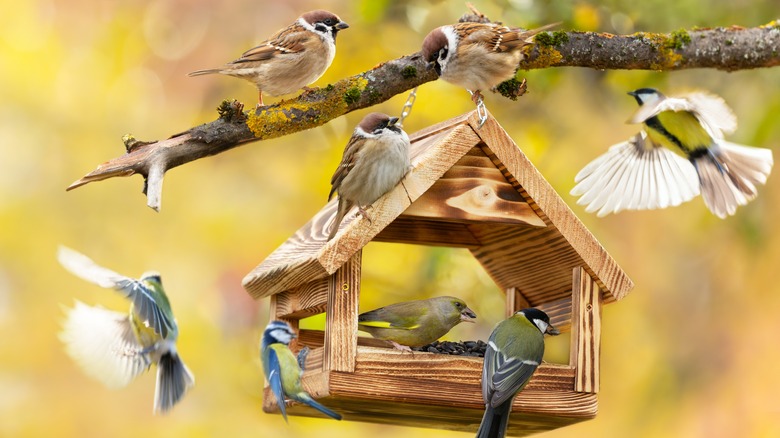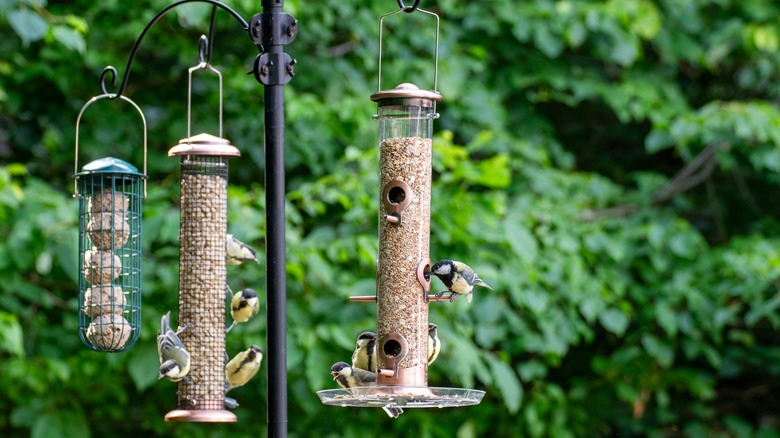Why Putting Your Feeders At Different Heights Is Key For Attracting Birds
We may receive a commission on purchases made from links.
Bird watching, or birding, is a popular hobby for those of any age. Whether you are a card-carrying member of the Audubon Society, or simply a backyard watcher, you don't need any special skills, knowledge, or birding paraphernalia to enjoy birds. It's an activity you can do without leaving your home, and can yield results with little effort. Birds are probably flocking to your yard whether or not you fill it with bird houses, baths, and feeders. However, if you've become tired of the same old birds populating your yard, there is a simple trick you can do to lure new species.
There are bird-watching benefits of having a bird feeder in your yard, especially if you know where to put it. Since birds fly, it's safe to assume they can access food from any location. However, different bird species actually prefer to feed at different heights. Therefore, placing bird feeders at different heights is key for attracting more birds to your yard, including species you haven't noticed before. It's also helpful to vary the type of feeders and type of bird food to satisfy a wide range of bird types. Doing so will also avoid feeding station congestion, and provide food for shy birds who don't enjoy a crowded restaurant.
The best bird feeder heights for various bird species
The three main eating locations for birds are ground, shrub, or tree. Robins, sparrows, juncos, towhees, doves, and goldfinches are all ground feeders. They typically live in meadows or fields where they feast on plant seeds and millet. Ground bird feeders, such as this Kingsyard platform feeder, are elevated a few inches off of the ground and have a mesh bottom for drainage. Ground feeders should be kept at least 10 feet from trees, shrubs, or other places where predators could hide and pounce without warning.
Shrub eaters include finches and cardinals, who may eat out of ground or low hanging feeders. Chickadees, titmice, jays, nuthatches, and woodpeckers are tree foragers, who prefer to eat high off the ground from tall feeders (particularly enjoying sunflower seeds, peanuts, and suet). There are feeders that can be hung on a short pole or high in the trees, and where you choose to hang them matters. For instance, hummingbirds like feeders on the shorter side (around four feet), but for orioles and woodpeckers, the taller the better (over ten feet). Regardless of hanging height, the best place to hang a bird feeder in your yard is in a quiet, visible location near (or in) a tree for quick cover if necessary.

